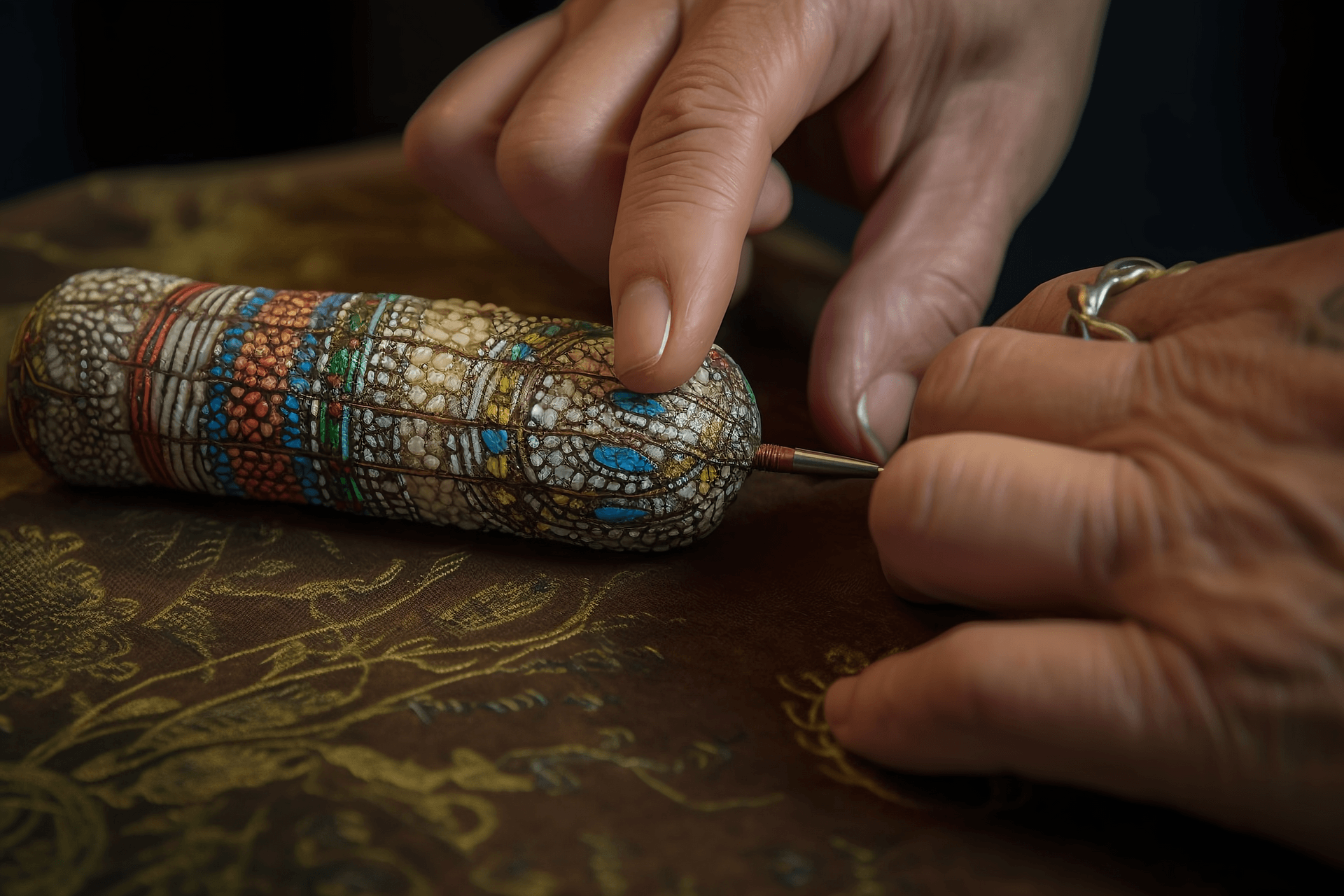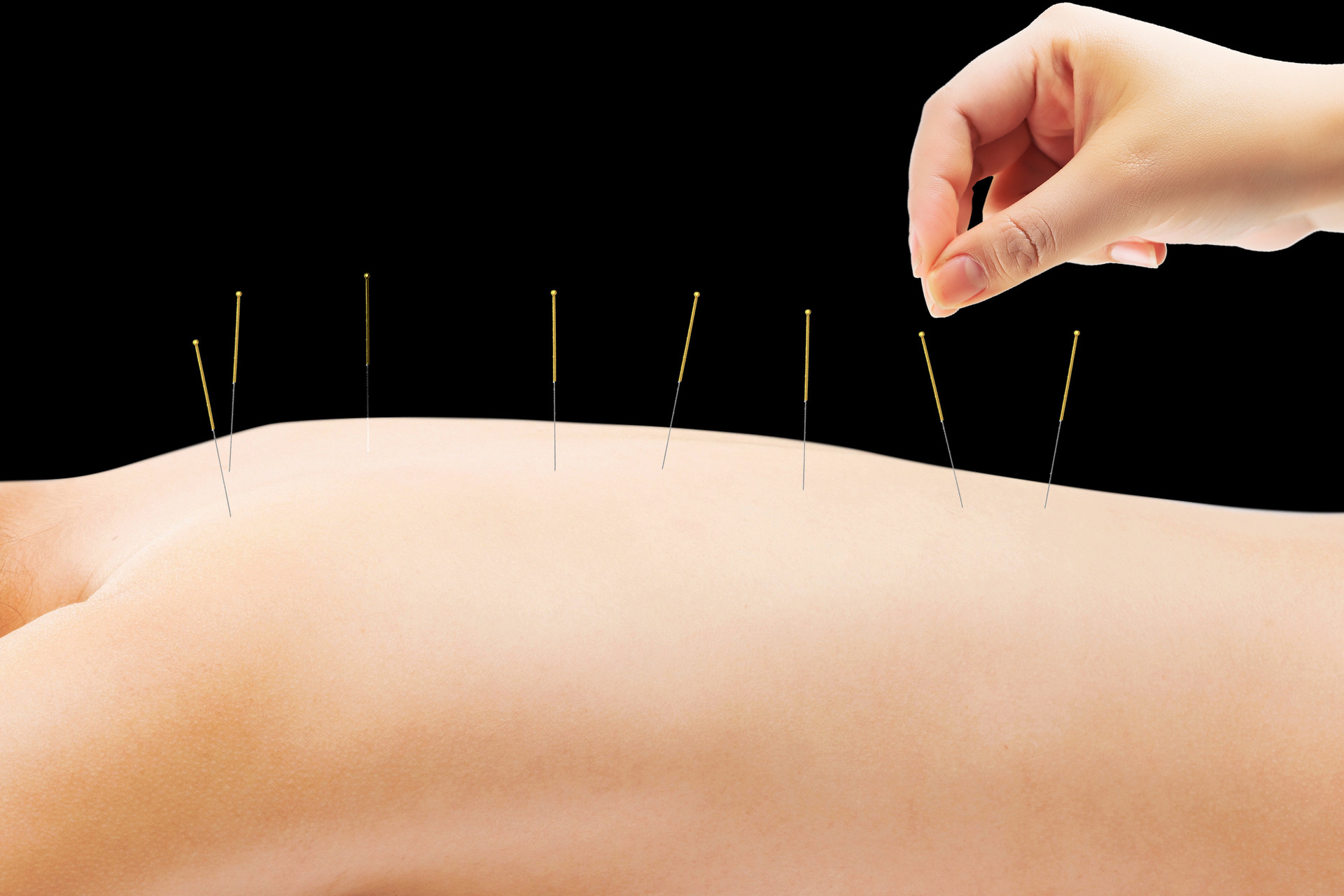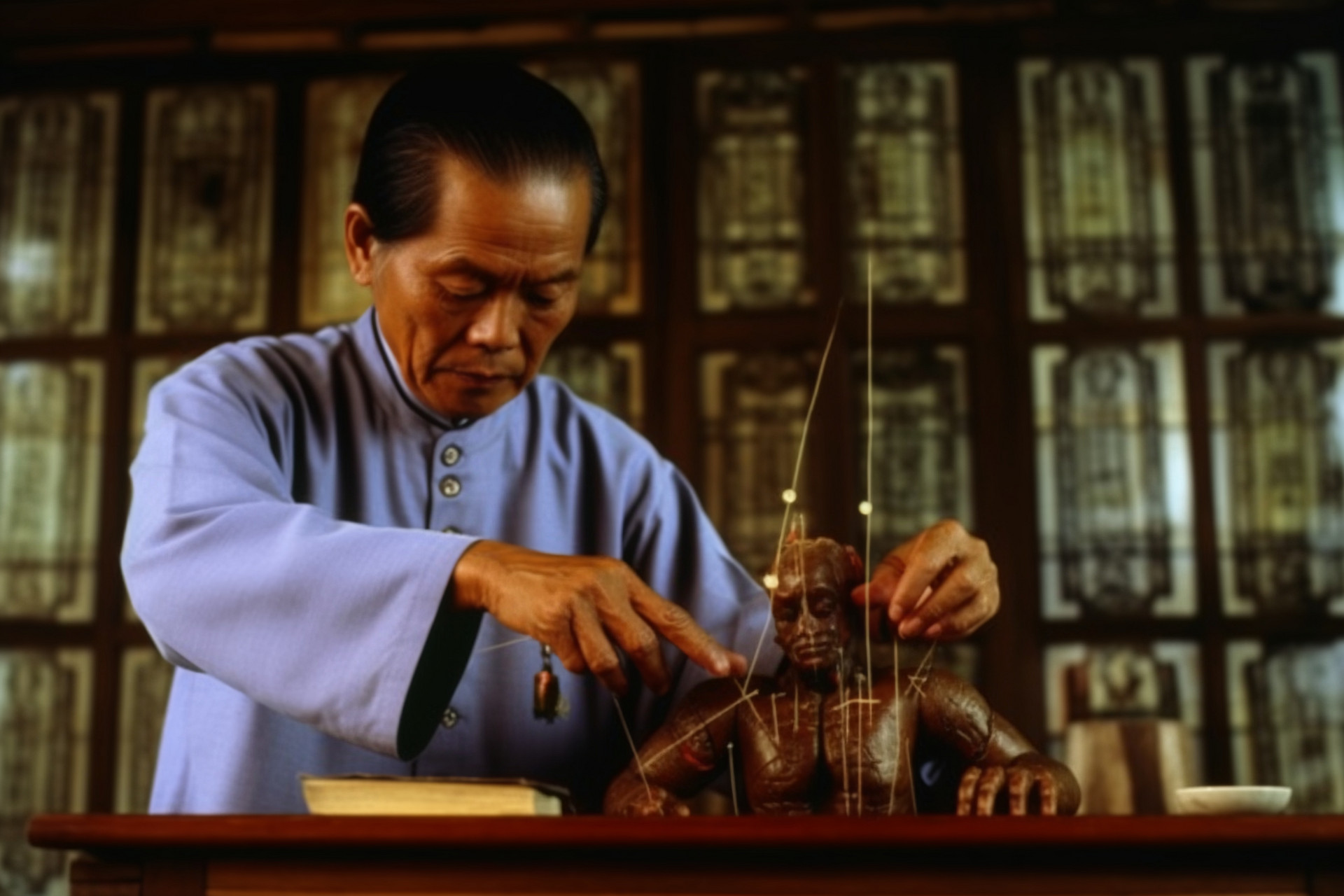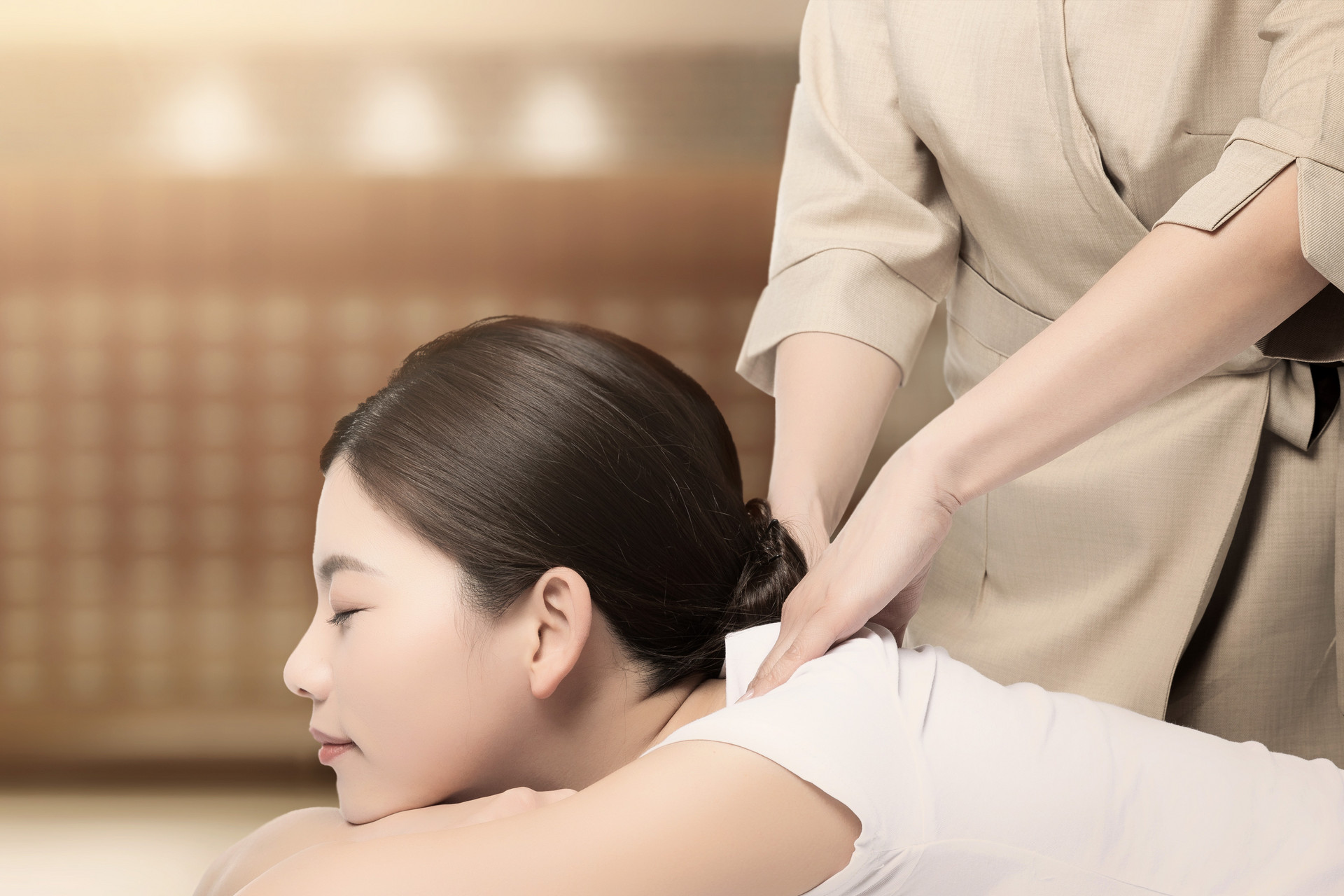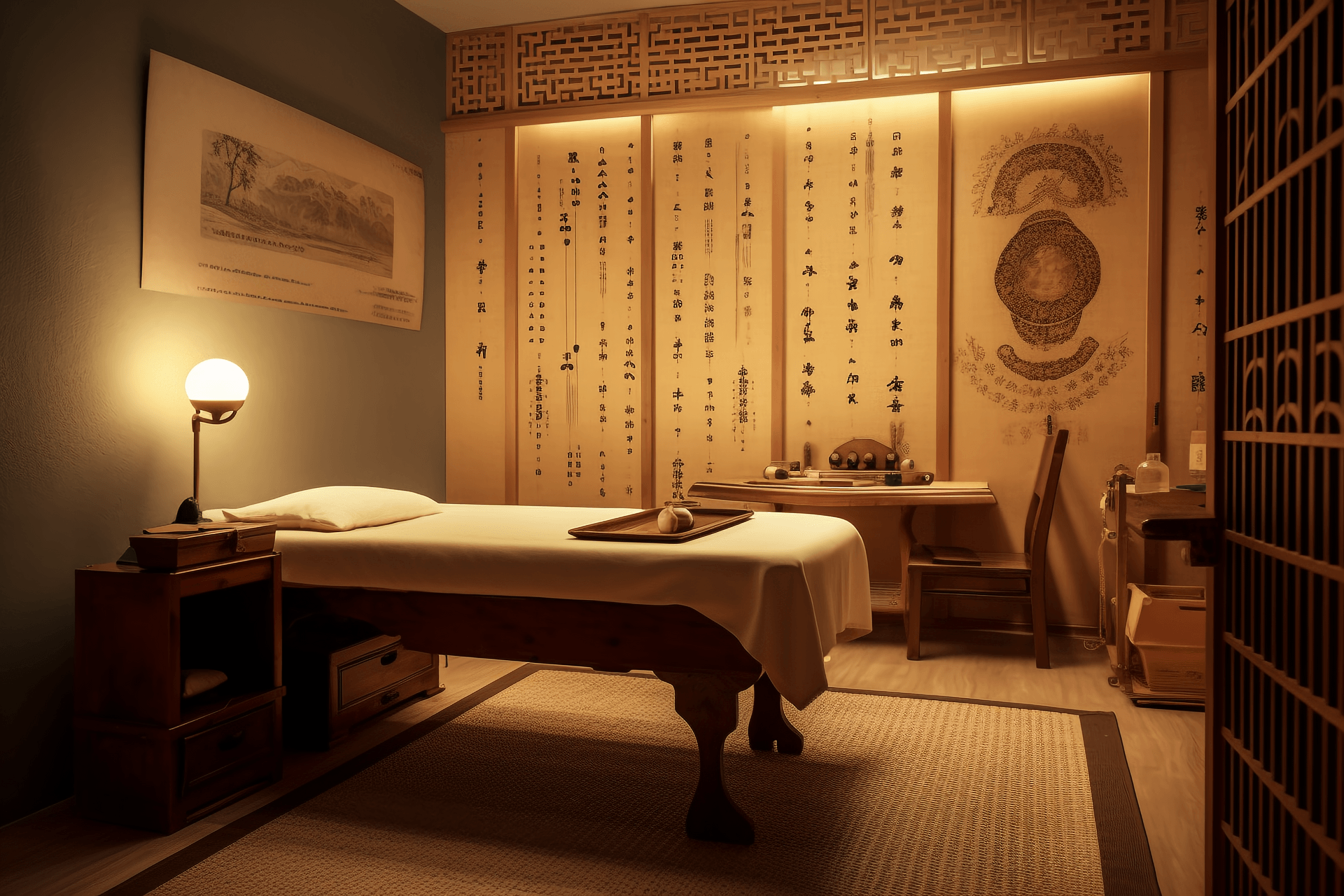The mang needle is a special long needle, usually made of thin and elastic stainless steel wire, because its shape is long and thin like a wheat awn, it is called the mang needle. The mang needle is developed from one of the ancient nine needles, the "long needle", with a needle length of about 17-25cm (5.0-8.0 cun), and there are also lengths above 33cm (1 foot), which provides the characteristic of deep needling.
[Operating method]
1. Needle
The structure of the mang needle is the same as the fine needle, divided into four parts: needle tip, needle body, needle handle, and needle tail, but the needle body is longer and made of elastic and flexible fine stainless steel wire. The length and thickness of the mang needle mainly refer to the needle body. The thickness is 29, 30, 31, 32. The length is 17cm (5 inches), 20cm (6 inches), 23cm (7 inches), 26cm (8 inches), 33cm (1 foot), 50cm (1.5 feet), 66cm (2 feet) or even longer. In clinical practice, 17-26cm (5-8 inches) is commonly used.
2. Operation
The various needling methods and tonifying and reducing techniques of the mang needle are derived from the basic needling techniques. They can be mainly divided into five types.
1. Insertion: When inserting the needle, try to avoid pain and achieve painless insertion. When inserting the needle, the middle, ring, and little fingers of the pressing hand are flexed on the skin, and the needle body is clamped with the thumb and index finger. The hand holding the needle handle allows the needle tip to touch the acupoint, and with the cooperation of the pressing hand, use finger strength and wrist strength to press and twist, quickly pierce through the epidermis. The technique of piercing the skin should be quick to reduce the patient's pain. The twisting should be light and the range should not be too large. It is best to be between 180 and 360 degrees.
2. Withdrawal: When withdrawing the needle, slowly lift the needle to the subcutaneous tissue and then gently withdraw it to avoid bleeding or pain. If blood quickly overflows or sprays from the needle hole after withdrawal, it is caused by the needle tip piercing a small artery. Immediately press the bleeding site with a dry cotton ball until the bleeding stops.
3. Twisting: After the needle is inserted to a certain depth, twisting technique can be applied. During the process of inserting and withdrawing the needle, the needle should be in a rotating state of twisting. When twisting, it is necessary to twist gently and slowly, alternating between left and right, and not only twist in one direction, otherwise it will cause the muscle fibers to entangle the needle body, causing pain or needle stagnation in the patient. On the other hand, by twisting according to certain rules, combined with different requirements of lightness, heaviness, speed, and slowness, it can have a certain tonifying and reducing effect.
4. Auxiliary techniques: After the needle is inserted to a certain depth, some auxiliary methods can be used to seek the appropriate needle sensation. This mainly relies on the movements of the pressing hand and the dexterous coordination of the needling hand. The method is that the index finger of the pressing hand gently presses and follows the needle body downward, like a pecking bird; at the same time, the needling hand slightly changes the direction radially, to expand the needle sensation.
5. Special methods: Due to the long needle body of the mang needle, there are some needling methods suitable for its own characteristics. The main ones are bending needling and penetrating needling.
(1) Bending needling: For some acupoints, due to their specific anatomical position, they cannot be directly needled to a certain depth, so bending needling is required, which means changing the direction of needling. For example, when needling the Tianzhu acupoint, you can first needle straight for about 0.5 inches, and then make the needle tip point downwards and enter the needle along the posterior edge of the sternum, which can be deeply needled for 4-5 inches. This needling method requires changing the angle of needle insertion held by the pressing hand according to the different anatomical characteristics of the acupoint, so that the needle tip can smoothly enter along the changing direction.
(2) Penetrating needling: Penetrating needling is a commonly used method for the mang needle, which can achieve the effect of needling multiple acupoints with one needle, such as penetrating the Dicang and Che acupoints, Yanglingquan and Yinyinlingquan acupoints, and Zhibian and Qichong acupoints. Some people treat infantile paralysis, sequelae of encephalitis, etc., by subcutaneously penetrating along the Du meridian from the lower back to the upper, the first needle penetrates from Changqiang to Mingmen, the second needle penetrates from Mingmen to Zhiyang, and the third needle penetrates from Zhiyang to Dazhui.
[Main indications]
1. Polyneuritis, amyotrophic lateral sclerosis, rheumatoid arthritis, cervical spondylosis, hemiplegia
1. The method of taking Quanzhi acupoint: Take the acupoint 2 inches below the mastoid process, the posterior border of the sternocleidomastoid muscle, and 1 inch below the anterior inferior angle of the occipital bone. Instruct the patient to lie supine with the head flat and slightly raised. Insert the needle from the left side, with the needle tip forward, equivalent to the gap between the 2nd and 3rd cervical vertebrae, using a gentle and slow technique. The depth is 1.5-2.5 inches. In more sensitive patients, the sensation direction spreads from the local area to the left upper and lower limbs, and then to the opposite half of the body, and the whole body should have a sour, numb, and distending sensation.
2. The method of taking Jianbi acupoint: Take the acupoint 1/3 below the posterior border of the sternocleidomastoid muscle, about 2 inches above the clavicle. The patient takes a supine position, and the needle tip is inserted horizontally slightly backward, and the needle is inserted gently and slowly. The depth is 0.3-0.8 inches. The sensation of sourness, numbness, and electric shock from the arm to the fingers is the standard.
In addition to the above-mentioned conditions, it can also treat shoulder and back numbness, brachial plexus neuralgia, radial (ulnar) nerve paralysis, median nerve paralysis, shoulder periarthritis, intercostal neuralgia, etc.
3. The method of taking Jianbei acupoint: Take the acupoint in the middle of the upper edge of the trapezius muscle, and the acupoint 1 inch in front. The patient is in a lateral position, and the needle tip is inserted downward and backward, equivalent to the 2nd
| 1 2 3 > >> >>|





